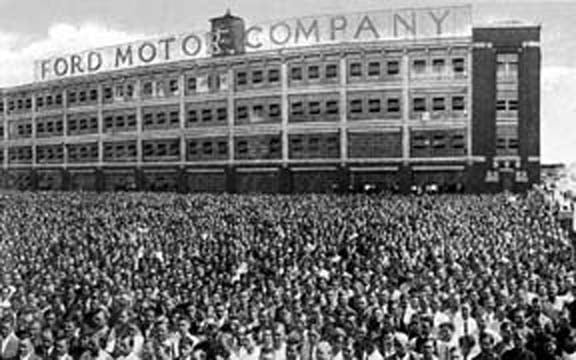One of our next projects will be the Ford Motor Company Cleveland Branch Assembly Plant. The building as been on our radar for a couple of years and now it has moved closer to the top of the pile. The first stage is research and I have reached out to some of the key original players: Ford Motor Company, Albert Kahn Architects and the Cleveland Institute of Art (current occupant). I learned something new in the process: Ford Motor Co. built a number of Branch Assembly Plants all around the United States. The count is somewhere close to 30!
All of them had like-design elements as one would assume practicle when developed by the grandfathers of the assembly line (Ford) and assembly line architecture (Kahn). The plants built in Cleveland and Cincinnati seem to have front elevations that are mirrors of each other. My goal is to do the same as we did for Cameron Station in Kansas City- secure original design drawings, resulting in a historically accurate model of an important building.
Many of these assembly plants would have been serviced by rail. Model T parts coming in and completed Model T cars going out. Ultimately I would like to have several of these buildings in our library of historic industrial era shadowbox and building models. I am asking for a some help gathering information about these assembly plants from OGR Forum members:
1. Pictures of Ford Motor Co. Branch Assembly Plants, preferably showing rail and railcars;
2. Valuation and fire insurance maps of showing Ford Motor Co. Assembly Plants and associated track plans;
3. Your interest in a specific city's Branch Assembly Plant for you layout;
4. Your knowledge of any of the Branch Assembly Plants that have been repurposed.
5. Information as to which railroad serviced a specific Branch Assembly Plant.
Thank you in advance for your assistance!
Cincinatti, OH
Cleveland, OH





















